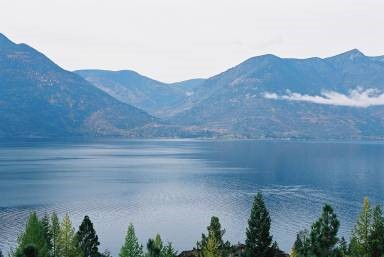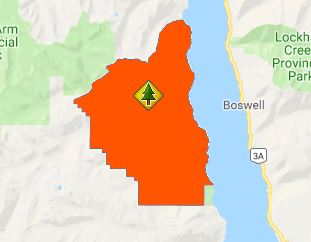Midge Creek Wildlife Management Area
Date Designated: April 6, 1998
Purpose: Maintenance and extension for the biological diversity of West Arm Provincial Park, providing important migration corridors.
Size: 14,757 hectares
Region: Kootenay/Boundary
Nature and culture
Fish and Wildlife: This WMA is a critical complement to the West Arm Wilderness Park area, providing important migration corridors and containing critical ungulate winter feeding areas as well as habitat for Grizzly Bear, Black Bear, Cougar, Bobcat, Interior Townsend’s Big-eared Bat, Osprey, Western Grebe, White-headed Woodpecker, American Bittern, American Avocet, and Columbian Red-tailed Chipmunk. Re-introduction of the blue-listed (vulnerable) Woodland Caribou and establishment of a fourth population centre for the internationally significant South Selkirk herd is one of the primary objectives for the area and adjacent provincial park. Midge and Seeman Creeks are important for Bull Trout spawning and rearing.
Physiography, Climate and Vegetation: The area includes a variety of ecosystems and wildlife habitats including old growth forests, riparian habitats, small lake and wetland complexes, avalanche tracks, talus slopes and vegetation/soil associations from valley bottom to ridgetop. Much of the area consists of dry rocky sites that are subject to frequent burning, particularly the south and east faces above Kootenay Lake. It is part of one of the largest roadless expanses in the Southern Columbia Mountains ecosection, and includes Engelmann Spruce-Subalpine Fir and Interior Cedar-Hemlock biogeoclimatic zones.
Planning and management
Information on management direction and possible restrictions on visitor activities are available from the Conservation Lands regional contacts.
Image
The Midge Creek WMA is located east of Nelson on the west side of the south arm of Kootenay Lake.


